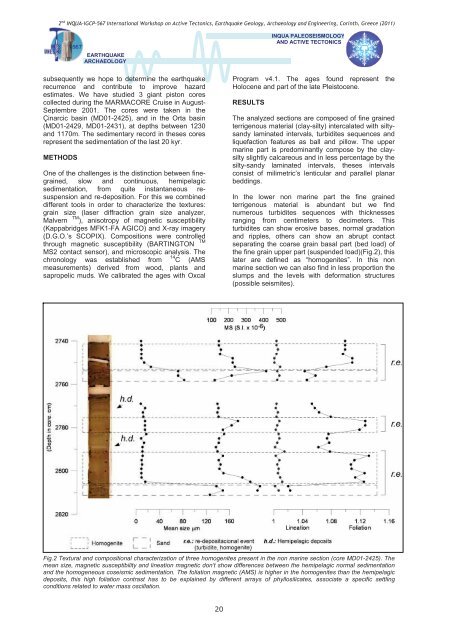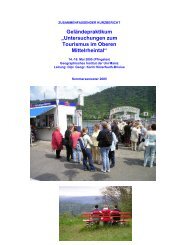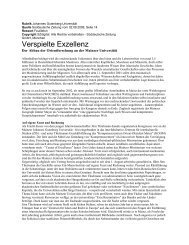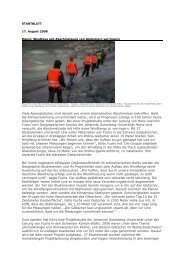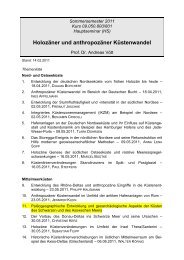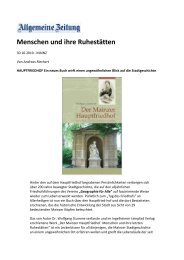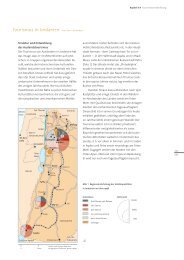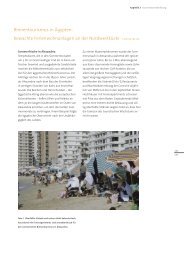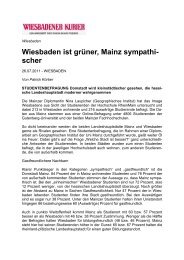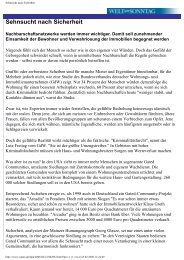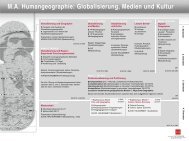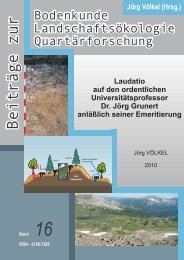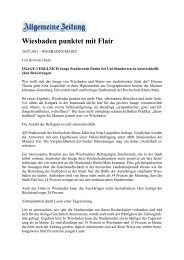2 nd INQUA-IGCP-567 International Workshop on Active Tectonics, Earthquake Geology, Archaeology and Engineering, Corinth, Greece (2011) EARTHQUAKE ARCHAEOLOGY INQUA PALEOSEISMOLOGY AND ACTIVE TECTONICS subsequently we hope to determine the earthquake recurrence and contribute to improve hazard estimates. We have studied 3 giant piston cores collected during the MARMACORE Cruise in August- Septembre 2001. The cores were taken in the Çinarcic basin (MD01-2425), and in the Orta basin (MD01-2429, MD01-2431), at depths between 1230 and 1170m. The sedimentary record in theses cores represent the sedimentation of the last 20 kyr. METHODS One of the challenges is the distinction between finegrained, slow and continuous, hemipelagic sedimentation, from quite instantaneous resuspension and re-deposition. For this we combined different tools in order to characterize the textures: grain size (laser diffraction grain size analyzer, Malvern TM ), anisotropy of magnetic susceptibility (Kappabridges MFK1-FA AGICO) and X-ray imagery (D.G.O.’s SCOPIX). Compositions were controlled through magnetic susceptibility (BARTINGTON TM MS2 contact sensor), and microscopic analysis. The chronology was established from 14 C (AMS measurements) derived from wood, plants and sapropelic muds. We calibrated the ages with Oxcal Program v4.1. The ages found represent the Holocene and part of the late Pleistocene. RESULTS The analyzed sections are composed of fine grained terrigenous material (clay-silty) intercalated with siltysandy laminated intervals, turbidites sequences and liquefaction features as ball and pillow. The upper marine part is predominantly compose by the claysilty slightly calcareous and in less percentage by the silty-sandy laminated intervals, theses intervals consist of milimetric’s lenticular and parallel planar beddings. In the lower non marine part the fine grained terrigenous material is abundant but we find numerous turbidites sequences with thicknesses ranging from centimeters to decimeters. This turbidites can show erosive bases, normal gradation and ripples, others can show an abrupt contact separating the coarse grain basal part (bed load) of the fine grain upper part (suspended load)(Fig.2), this later are defined as “homogenites”. In this non marine section we can also find in less proportion the slumps and the levels with deformation structures (possible seismites). Fig.2 Textural and compositional characterization of three homogenites present in the non marine section (core MD01-2425). The mean size, magnetic susceptibility and lineation magnetic don’t show differences between the hemipelagic normal sedimentation and the homogeneous coseismic sedimentation. The foliation magnetic (AMS) is higher in the homogenites than the hemipelagic deposits, this high foliation contrast has to be explained by different arrays of phyllosilicates, associate a specific settling conditions related to water mass oscillation. 20
2 nd INQUA-IGCP-567 International Workshop on Active Tectonics, Earthquake Geology, Archaeology and Engineering, Corinth, Greece (2011) EARTHQUAKE ARCHAEOLOGY INQUA PALEOSEISMOLOGY AND ACTIVE TECTONICS The Magnetic Susceptibility signature in the marine part is in general lower than the non marine part (average in the marine part is10x10 -5 SI and 30x10 -5 SI in the non marine part). In general this signature is strong in the silty-sandy laminated intervals and in the turbidites sequences. In the turbidites sequences this signature has a behavior similar to the one observed in the profiles of grain-size, being higher in the sand layers than the fine grain, and showing constants values in the homogenites. On the other hand, the foliation determined from the Anisotropy of Magnetic Susceptibility is much higher in the levels the fine grain size belonging to the homogenites (average of 1.12) than any other level of thin grain size (average 1.06) (Fig.2). As both types of levels (homogenites and hemipelagic deposits) have similar grain-sizes and not very different composition, this high foliation contrast has to be explained by different arrays of phyllosilicates, which, at their turn, cannot be explained by different compactions. Thus, we infer specific settling conditions related to water mass oscillation. In the study area others analyses are in processes such as the carbonates contents, clay minerals, analysis of terrigenous fraction (mineralogy), organic matter, etc. References Armijo, R., Meyer, B., Hubert, A., Barka, A. (1999). Westward propagation of the North Anatolian Fault into the northern Aegean: timing and kinematics. Geology 27 (3), 267–270. Beck C., Mercier de Lepinay B., Schneider J.L., Cremer M., Cagatay N., Wendenbaum E., Boutareaud S., Menot G., Schmidt S., Weber O., Eris K., Armijo R., Meyer B., Pondard N., Gutscher M.A., Turon J.L., Labeyrie L., Cortijo E., Gallet Y., Bouquerel H., Gorur N., Gervais A., Castera M.H., Londeix L., de Resseguier A., Jaouen A. (2007) Late Quaternary co-seismic sedimentation in the Sea of Marmara's deep basins, Sedimentary Geology, 199, 65-89. Calvo, J.P., Rodriguez-Pascua, M., Martin-Velazquez, S., Jimenez, S., De Vicente, G. (1998). Microdeformation of lacustrine laminate sequences from Late Miocene formations of SE Spain: an interpretation of loop bedding. Sedimentology 45, 279–292. Chapron, E., Beck, C., Pourchet, M., Deconinck, J.-F. (1999). 1822 AD earthquake-triggered homogenite in Lake Le Bourget (NW Alps). Terra Nova 11, 86–92. Flerit, F., Armijo, R., King, G.C.P., Meyer, B., Barka, E. (2003). Slip partitioning in the Sea of Marmara pull-apart determined from GPS velocity vectors. Geophysical Journal International 154, 1–7. Hancock, P.L., Barka, A.A. (1981). Opposed shear senses inferred from neotectonic mesofractures systems in the North Anatolian fault zone. J. Struct. Geol. 3, 383–392. Hempton, M.R., Dewey, J.F. (1983). Earthquake-induced deformational structures in young lacustrine sediments, East Anatolian Fault, southwest Turkey. Tectonophysics 98, 7–14. McClusky, S., Bassalanian, S., Barka, A., Demir, C., Ergintav, S., Georgiev, I., Gurkan, O., Hamburger, M., Hurst, K., Hans-Gert, H.-G., Karstens, K., Kekelidze, G., King, R., Kotzev, V., Lenk, O., Mahmoud, S., Mishin, A., Nadariya, M., Ouzounis, A., Paradissis, D., Peter, Y., Prilepin, M., Relinger, R., Sanli, I., Seeger, H., Tealeb, A., Toksöz, M.N., Veis, G.(2000). Global positioning system constraints on plate kinematics and dynamics in the eastern Mediterranean and Caucasus. Journal of Geophysical Research 105, 5695–5719. Sengör, A.M.C., Tuysuz, O., Imren, C., Sakinc, M., Eyidogan, H., Gorur, N., Le Pichon, X., Claude Rangin, C. (2004). The North Anatolian Fault. A new look. Ann. Rev. Earth Planet. Sci. 33, 1-75. Stegmann, S., Strasser, M., Anselmetti, F.S., Kopf, A. (2007). Geotechnical in situ characterisation of subaquatic slopes: The role of pore pressure transients versus frictional strength in landslide initiation. Geophysical Research Letters, 34, L07607 Strasser, M, Anselmetti, F.S., Fäh, D., Giardini, D., Schnellmann, M. (2006). Magnitudes and source areas of large prehistoric northern Alpine earthquakes revealed by slope failures in lakes. Geology, 34 (12) 21
- Page 1: Proceedings Volume 2, 2011 Earthqua
- Page 4: Printed by The Natural Hazards Labo
- Page 9 and 10: 2 nd INQUA-IGCP-567 International W
- Page 11 and 12: 2 nd INQUA-IGCP-567 International W
- Page 13 and 14: 2 nd INQUA-IGCP-567 International W
- Page 15 and 16: 2 nd INQUA-IGCP-567 International W
- Page 17 and 18: 2 nd INQUA-IGCP-567 International W
- Page 19 and 20: 2 nd INQUA-IGCP-567 International W
- Page 21 and 22: 2 nd INQUA-IGCP-567 International W
- Page 23 and 24: 2 nd INQUA-IGCP-567 International W
- Page 25: 2 nd INQUA-IGCP-567 International W
- Page 29 and 30: 2 nd INQUA-IGCP-567 International W
- Page 31 and 32: 2 nd INQUA-IGCP-567 International W
- Page 33 and 34: 2 nd INQUA-IGCP-567 International W
- Page 35 and 36: 2 nd INQUA-IGCP-567 International W
- Page 37 and 38: 2 nd INQUA-IGCP-567 International W
- Page 39 and 40: 2 nd INQUA-IGCP-567 International W
- Page 41 and 42: 2 nd INQUA-IGCP-567 International W
- Page 43 and 44: 2 nd INQUA-IGCP-567 International W
- Page 45 and 46: 2 nd INQUA-IGCP-567 International W
- Page 47 and 48: 2 nd INQUA-IGCP-567 International W
- Page 49 and 50: 2 nd INQUA-IGCP-567 International W
- Page 51 and 52: 2 nd INQUA-IGCP-567 International W
- Page 53 and 54: 2 nd INQUA-IGCP-567 International W
- Page 55 and 56: 2 nd INQUA-IGCP-567 International W
- Page 57 and 58: 2 nd INQUA-IGCP-567 International W
- Page 59 and 60: 2 nd INQUA-IGCP-567 International W
- Page 61 and 62: 2 nd INQUA-IGCP-567 International W
- Page 63 and 64: 2 nd INQUA-IGCP-567 International W
- Page 65 and 66: 2 nd INQUA-IGCP-567 International W
- Page 67 and 68: 2 nd INQUA-IGCP-567 International W
- Page 69 and 70: 2 nd INQUA-IGCP-567 International W
- Page 71 and 72: 2 nd INQUA-IGCP-567 International W
- Page 73 and 74: 2 nd INQUA-IGCP-567 International W
- Page 75 and 76: 2 nd INQUA-IGCP-567 International W
- Page 77 and 78:
2 nd INQUA-IGCP-567 International W
- Page 79 and 80:
2 nd INQUA-IGCP-567 International W
- Page 81 and 82:
2 nd INQUA-IGCP-567 International W
- Page 83 and 84:
2 nd INQUA-IGCP-567 International W
- Page 85 and 86:
2 nd INQUA-IGCP-567 International W
- Page 87 and 88:
2 nd INQUA-IGCP-567 International W
- Page 89 and 90:
2 nd INQUA-IGCP-567 International W
- Page 91 and 92:
2 nd INQUA-IGCP-567 International W
- Page 93 and 94:
2 nd INQUA-IGCP-567 International W
- Page 95 and 96:
2 nd INQUA-IGCP-567 International W
- Page 97 and 98:
2 nd INQUA-IGCP-567 International W
- Page 99 and 100:
2 nd INQUA-IGCP-567 International W
- Page 101 and 102:
2 nd INQUA-IGCP-567 International W
- Page 103 and 104:
2 nd INQUA-IGCP-567 International W
- Page 105 and 106:
2 nd INQUA-IGCP-567 International W
- Page 107 and 108:
2 nd INQUA-IGCP-567 International W
- Page 109 and 110:
2 nd INQUA-IGCP-567 International W
- Page 111 and 112:
2 nd INQUA-IGCP-567 International W
- Page 113 and 114:
2 nd INQUA-IGCP-567 International W
- Page 115 and 116:
2 nd INQUA-IGCP-567 International W
- Page 117 and 118:
2 nd INQUA-IGCP-567 International W
- Page 119 and 120:
2 nd INQUA-IGCP-567 International W
- Page 121 and 122:
2 nd INQUA-IGCP-567 International W
- Page 123 and 124:
2 nd INQUA-IGCP-567 International W
- Page 125 and 126:
2 nd INQUA-IGCP-567 International W
- Page 127 and 128:
2 nd INQUA-IGCP-567 International W
- Page 129 and 130:
2 nd INQUA-IGCP-567 International W
- Page 131 and 132:
2 nd INQUA-IGCP-567 International W
- Page 133 and 134:
2 nd INQUA-IGCP-567 International W
- Page 135 and 136:
2 nd INQUA-IGCP-567 International W
- Page 137 and 138:
2 nd INQUA-IGCP-567 International W
- Page 139 and 140:
2 nd INQUA-IGCP-567 International W
- Page 141 and 142:
2 nd INQUA-IGCP-567 International W
- Page 143 and 144:
2 nd INQUA-IGCP-567 International W
- Page 145 and 146:
2 nd INQUA-IGCP-567 International W
- Page 147 and 148:
2 nd INQUA-IGCP-567 International W
- Page 149 and 150:
2 nd INQUA-IGCP-567 International W
- Page 151 and 152:
2 nd INQUA-IGCP-567 International W
- Page 153 and 154:
2 nd INQUA-IGCP-567 International W
- Page 155 and 156:
2 nd INQUA-IGCP-567 International W
- Page 157 and 158:
2 nd INQUA-IGCP-567 International W
- Page 159 and 160:
2 nd INQUA-IGCP-567 International W
- Page 161 and 162:
2 nd INQUA-IGCP-567 International W
- Page 163 and 164:
2 nd INQUA-IGCP-567 International W
- Page 165 and 166:
2 nd INQUA-IGCP-567 International W
- Page 167 and 168:
2 nd INQUA-IGCP-567 International W
- Page 169 and 170:
2 nd INQUA-IGCP-567 International W
- Page 171 and 172:
2 nd INQUA-IGCP-567 International W
- Page 173 and 174:
2 nd INQUA-IGCP-567 International W
- Page 175 and 176:
2 nd INQUA-IGCP-567 International W
- Page 177 and 178:
2 nd INQUA-IGCP-567 International W
- Page 179 and 180:
2 nd INQUA-IGCP-567 International W
- Page 181 and 182:
2 nd INQUA-IGCP-567 International W
- Page 183 and 184:
2 nd INQUA-IGCP-567 International W
- Page 185 and 186:
2 nd INQUA-IGCP-567 International W
- Page 187 and 188:
2 nd INQUA-IGCP-567 International W
- Page 189 and 190:
2 nd INQUA-IGCP-567 International W
- Page 191 and 192:
2 nd INQUA-IGCP-567 International W
- Page 193 and 194:
2 nd INQUA-IGCP-567 International W
- Page 195 and 196:
2 nd INQUA-IGCP-567 International W
- Page 197 and 198:
2 nd INQUA-IGCP-567 International W
- Page 199 and 200:
2 nd INQUA-IGCP-567 International W
- Page 201 and 202:
2 nd INQUA-IGCP-567 International W
- Page 203 and 204:
2 nd INQUA-IGCP-567 International W
- Page 205 and 206:
2 nd INQUA-IGCP-567 International W
- Page 207 and 208:
2 nd INQUA-IGCP-567 International W
- Page 209 and 210:
2 nd INQUA-IGCP-567 International W
- Page 211 and 212:
2 nd INQUA-IGCP-567 International W
- Page 213 and 214:
2 nd INQUA-IGCP-567 International W
- Page 215 and 216:
2 nd INQUA-IGCP-567 International W
- Page 217 and 218:
2 nd INQUA-IGCP-567 International W
- Page 219 and 220:
2 nd INQUA-IGCP-567 International W
- Page 221 and 222:
2 nd INQUA-IGCP-567 International W
- Page 223 and 224:
2 nd INQUA-IGCP-567 International W
- Page 225 and 226:
2 nd INQUA-IGCP-567 International W
- Page 227 and 228:
2 nd INQUA-IGCP-567 International W
- Page 229 and 230:
2 nd INQUA-IGCP-567 International W
- Page 231 and 232:
2 nd INQUA-IGCP-567 International W
- Page 233 and 234:
2 nd INQUA-IGCP-567 International W
- Page 235 and 236:
2 nd INQUA-IGCP-567 International W
- Page 237 and 238:
2 nd INQUA-IGCP-567 International W
- Page 239 and 240:
2 nd INQUA-IGCP-567 International W
- Page 241 and 242:
2 nd INQUA-IGCP-567 International W
- Page 243 and 244:
2 nd INQUA-IGCP-567 International W
- Page 245 and 246:
2 nd INQUA-IGCP-567 International W
- Page 247 and 248:
2 nd INQUA-IGCP-567 International W
- Page 249 and 250:
2 nd INQUA-IGCP-567 International W
- Page 251 and 252:
2 nd INQUA-IGCP-567 International W
- Page 253 and 254:
2 nd INQUA-IGCP-567 International W
- Page 255 and 256:
2 nd INQUA-IGCP-567 International W
- Page 257 and 258:
2 nd INQUA-IGCP-567 International W
- Page 259 and 260:
2 nd INQUA-IGCP-567 International W
- Page 261 and 262:
2 nd INQUA-IGCP-567 International W
- Page 263 and 264:
2 nd INQUA-IGCP-567 International W
- Page 265 and 266:
2 nd INQUA-IGCP-567 International W
- Page 267 and 268:
2 nd INQUA-IGCP-567 International W
- Page 269 and 270:
2 nd INQUA-IGCP-567 International W
- Page 271 and 272:
2 nd INQUA-IGCP-567 International W
- Page 273 and 274:
2 nd INQUA-IGCP-567 International W
- Page 275 and 276:
2 nd INQUA-IGCP-567 International W
- Page 277 and 278:
2 nd INQUA-IGCP-567 International W
- Page 279 and 280:
2 nd INQUA-IGCP-567 International W
- Page 281 and 282:
2 nd INQUA-IGCP-567 International W
- Page 283 and 284:
2 nd INQUA-IGCP-567 International W
- Page 285 and 286:
2 nd INQUA-IGCP-567 International W
- Page 287 and 288:
2 nd INQUA-IGCP-567 International W
- Page 289 and 290:
2 nd INQUA-IGCP-567 International W
- Page 291 and 292:
2 nd INQUA-IGCP-567 International W
- Page 293 and 294:
2 nd INQUA-IGCP-567 International W
- Page 295 and 296:
2 nd INQUA-IGCP-567 International W
- Page 297 and 298:
2 nd INQUA-IGCP-567 International W
- Page 299 and 300:
2 nd INQUA-IGCP-567 International W
- Page 301 and 302:
2 nd INQUA-IGCP-567 International W
- Page 303 and 304:
2 nd INQUA-IGCP-567 International W
- Page 305:
2 nd INQUA-IGCP-567 International W


